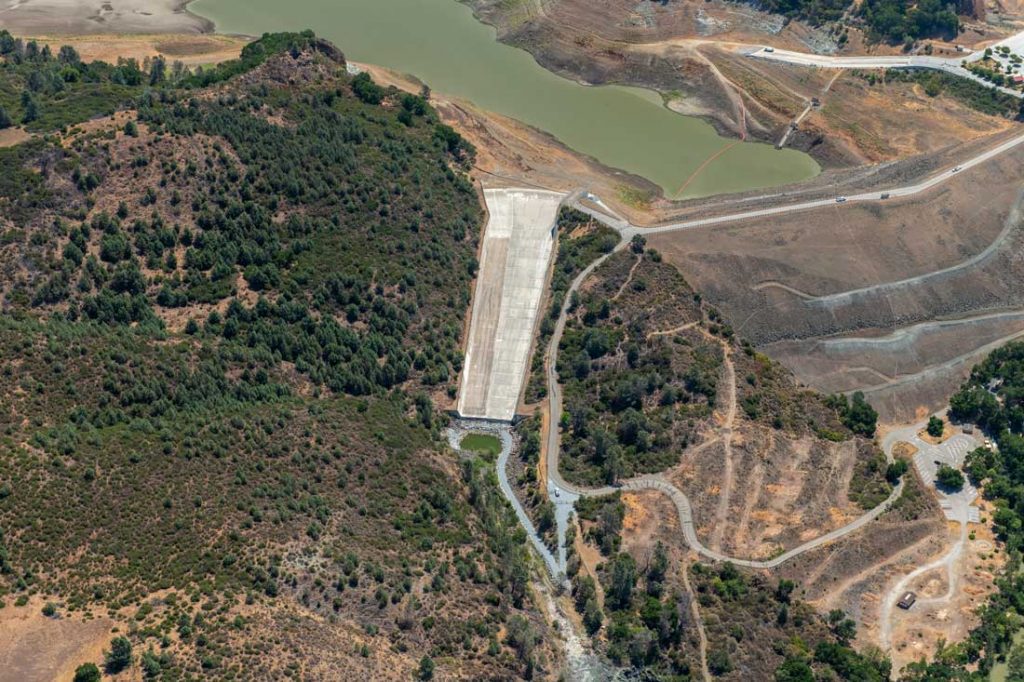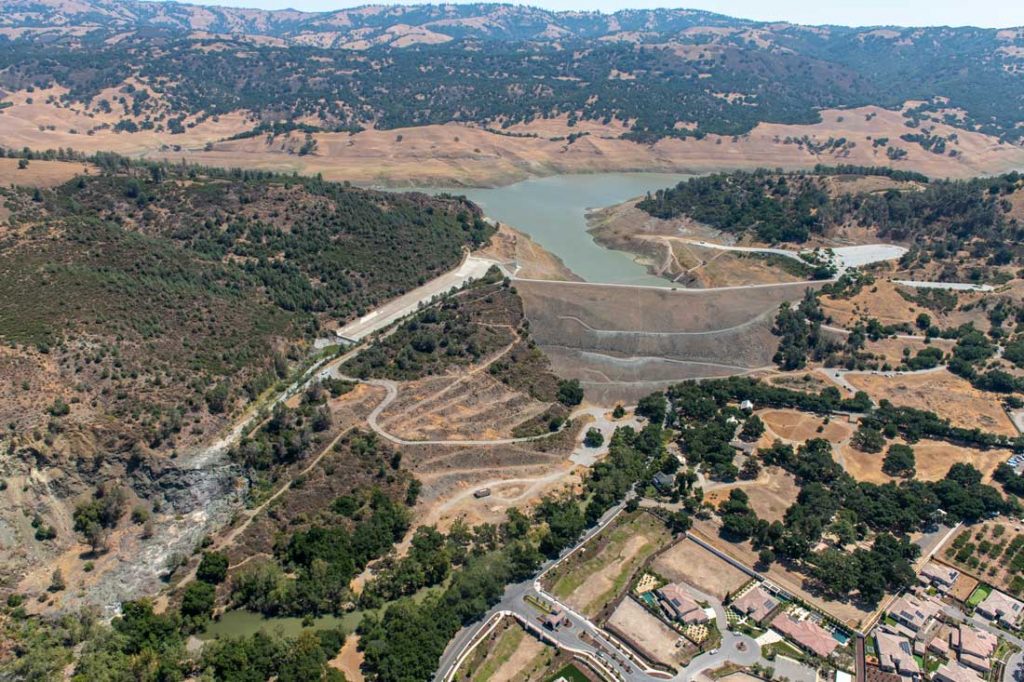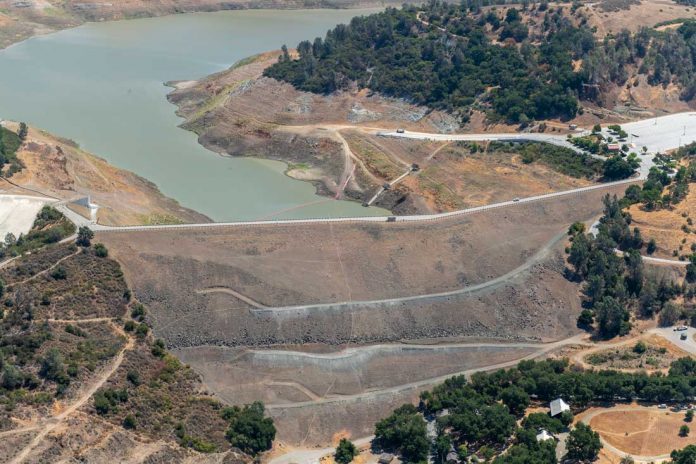U.S. representatives joined local officials July 7 at Anderson Reservoir in northeast Morgan Hill for the groundbreaking ceremony for the Anderson Dam Retrofit project, which is expected to take up to 10 years to complete.
The long-awaited project will not only protect Santa Clara Valley residents and properties from potential flooding; it will also go a long way toward improving the region’s water quality and storage capacities, according to those who spoke at the ceremony.
Congresswoman Zoe Lofgren—who represents the 19th U.S. congressional district, which includes Santa Clara County—said a potential failure of Anderson Dam when the reservoir would be “catastrophic” for Morgan Hill and throughout the valley. A “wall of water” would engulf Morgan Hill within 14 minutes in such a disaster, Lofgren said.
“Not only would this flood parts of San Jose,” Lofgren said. “In a major event it would flood all the way up to…the San Francisco Bay. It floods all the way through the Pajaro (River) from the Monterey Bay.”
The $576-million Anderson Dam Retrofit project is designed to prevent that. The project, which is led by the Valley Water agency, will begin with the construction of a new discharge tunnel that will significantly increase the reservoir’s ability to release water when needed.
After the tunnel is complete, crews will rebuild the earthen dam at Anderson to make it bigger and sturdier. The project is expected to be complete by 2031, at which point the reservoir can return to full capacity and help augment Santa Clara County’s water supplies.
In 2009, state authorities determined that the dam would not withstand a major earthquake, and the crest of the dam could slump in such an event—leaving Morgan Hill underwater within minutes.
The complicated Anderson Dam project required the cooperation—which at times has proven to be elusive—among local, regional, state and federal agencies. Lofgren said July 7 that a key turning point happened just before the Covid-19 pandemic began, when she gathered some of her fellow representatives from the region for a meeting to “get people on the same page.”
Shortly after that meeting, federal authorities ordered Valley Water to expedite the draining of Anderson Reservoir in late 2019.
Valley Water Director John Varela, also a former Morgan Hill City Councilmember, has been involved in the Anderson Dam planning process for years. At the July 7 groundbreaking, he posthumously recognized former Valley Water Director and Morgan Hill Mayor Dennis Kennedy, who died in 2016.
“This was his dream to get this dam built,” Varela said. “We are well on our way in getting that completed.”
Also attending the groundbreaking ceremony were U.S. Representatives Ro Khanna (17th District) and Anna Eshoo (18th District), as well as Assemblymember Ash Kalra (27th California Assembly District) and members of the Morgan Hill City Council.
Mayor Rich Constantine pointed out that the dam project would not have come to fruition without the region’s congressional delegation made up of Lofgren, Eshoo and U.S. Rep. Jimmy Panetta (20th District).
Constantine said the groundbreaking is a “great beginning” for the massive public works project.
“The citizens of Morgan Hill have had to live in the shadow of a potential disaster—not just for Morgan Hill but for the entire Santa Clara County,” Constantine said. “So the fact that we are here today having a groundbreaking on a 10-year project is monumental. This is just the beginning; we’re not done.”
Assemblymember Robert Rivas of the 30th State Assembly District was unable to attend the July 7 groundbreaking, but those who did made sure to give him credit for the project. Rivas authored a number of bills in the legislature that had to do with the schedule and quality of the Anderson Dam Retrofit construction.
Rivas said in a press release that one of those bills, AB271, currently sits on Gov. Gavin Newsom’s desk for his signature. The bill would allow Valley Water to select construction contractors who offer “the best combination of price, quality, safety, and experience,” rather than the cheapest.
“The project is urgently needed to ensure the area’s water supply and safeguard neighboring residents and businesses from potential flooding in the event of a major earthquake,” Rivas said. “Amid the current climate crisis and spreading drought, I cannot overstate the importance of completing this project at the earliest possible date.”























